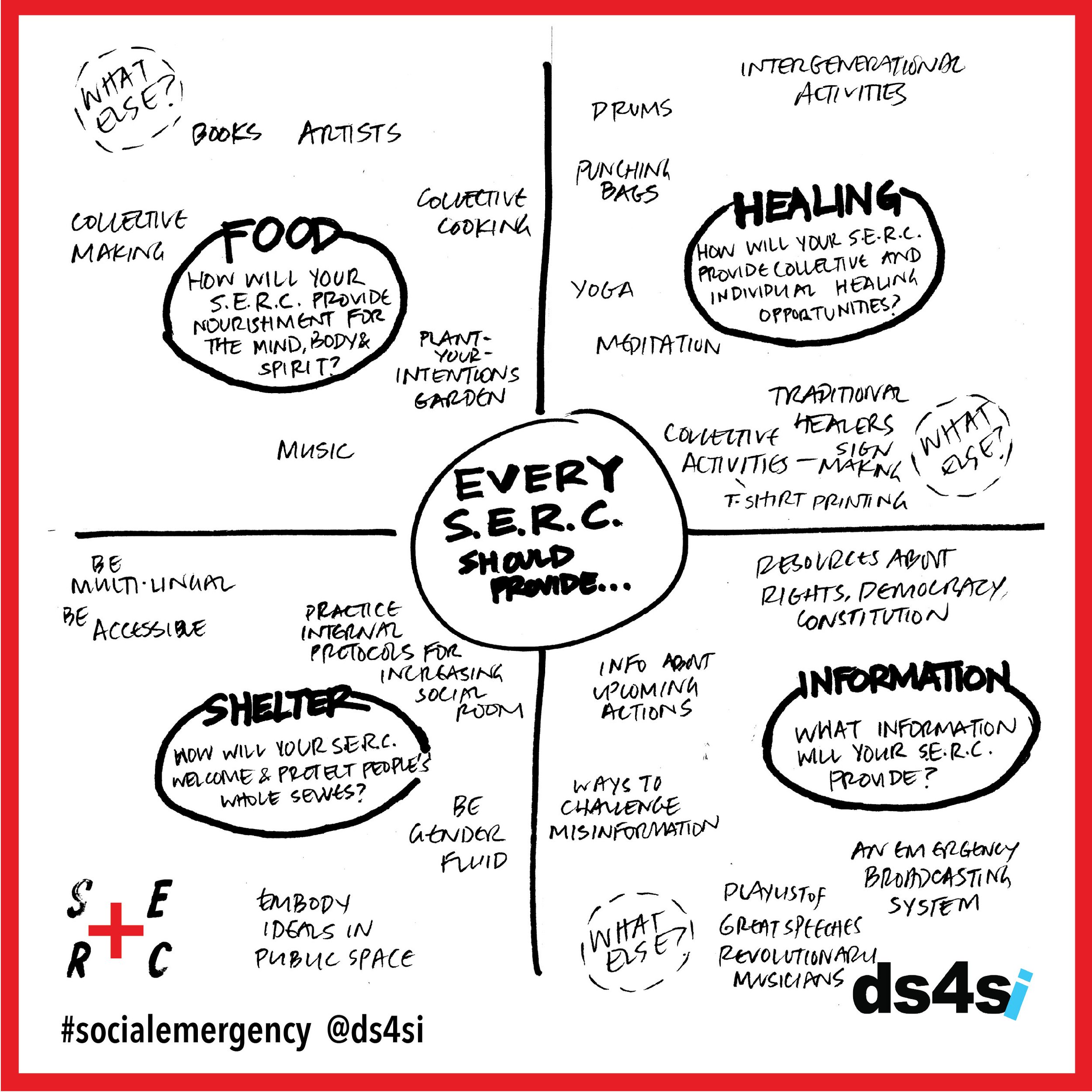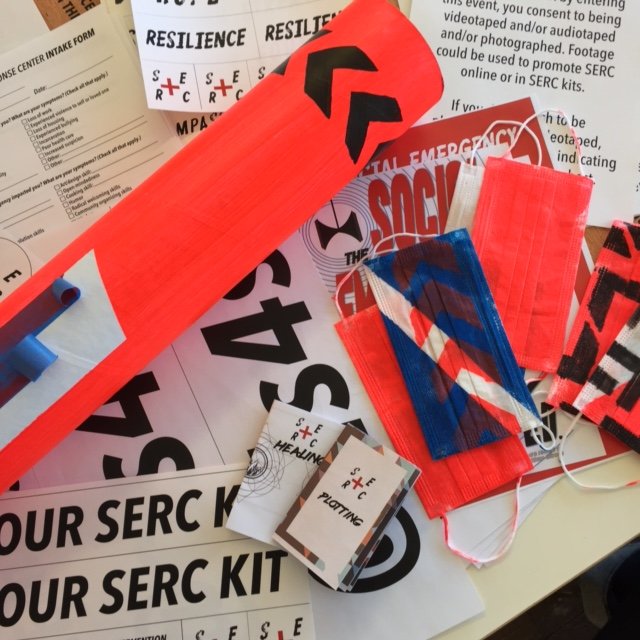Social Emergency Response Center (SERC)
In emergencies like hurricanes, fires and floods, emergency response centers are a state-sponsored infrastructure created to provide temporary services like housing, food, water and information. In the fall of 2016, DS4SI invited others to join us in re-imagining this arrangement to take on the real and pressing social emergency that we were facing—from state-sanctioned violence against Black communities, to gentrification, Islamophobia, privatization, environmental devastation, and more. Our first SERC opened in Boston the weekend after Trump’s inauguration. It was packed with close to 300 neighbors, artists, activists, health professionals, families, academics, city workers and spiritual leaders.
Discovery
We started to explore the concept of a “social emergency” in 2014 when a grand jury refused to indict Ferguson police officer Darren Wilson for the murder of Michael Brown. Some people were profoundly impacted, while others could go about their business, or might not even realize that they needed to step out of ordinary time to respond. We wanted to use the metaphor of “emergency procedures” to explore how a common understanding of response to these moments could make us more organizable and effective, as well as help us see the numerous connections between such incidents.
Ideation (and Specification, and Iteration!)
We felt a lot of urgency to move quickly in response to the social emergency. Because of this, our phases of ideation, specification, and iteration looped together rapidly. Think of something, try it out, get feedback, try again. (As we say, the design process isn’t as linear as it looks.) We came up with a lot of ideas of how we might spread the concepts of “social emergency” and “social emergency procedures”. We developed a written piece, A Case for Social Emergency Procedures, we put out a call for artists and activists to share their ideas for procedures, we came up with graphics and even a stand alone portable installation.
Ideation Part 2
One of the pieces of feedback we got from our thought partner Mindy Fullilove was that in emergencies, there were procedures, but there was also infrastructure. There was “stop drop and roll” but there were also built in fire escapes and fire departments. That made us think. What was the infrastructure needed in a social emergency? Which brought us to the familiar infrastructure of an emergency response center during and after environmental disasters like floods and hurricanes. State-sponsored emergency response centers provide temporary services like shelter, food, water and information. We decided to use this metaphor to create a Social Emergency Response Center (SERC). We came up with four quadrants that a SERC should have: cooking, making, plotting, and healing. We also wanted SERCs to offer “shelter” by offering radical welcoming and creating a space where people could bring their whole selves. It was important to us that SERCs break the part of the metaphor where some people have been hit by a storm, while others parachute in to offer help. We needed everyone to understand that they were impacted by the social emergency, as well as having things to offer.
Specification
The first SERC (which occurred over 2 weekends just as Donald Trump was being inaugurated in 2017) was co-designed by approximately 50 artists, activists, and community members over the course of the fall. Far from the sterile environment of an emergency response center, the SERC was vibrant, engaging, collectively led, and packed with close to 300 neighbors, artists, activists, health professionals, families, academics, city workers and spiritual leaders.
Iteration
One of the things we learned from our first SERC prototype was that there was a tremendous interest in this new arrangement. That made us think that the SERC should be something available to any community when they needed it. So we circled back to ideation, creating our next iteration of SERC: an in-depth SERC Manual and a SERC Kit to share with communities that wanted to launch their own SERCs. Indeed, dozens of SERCs have been launched both nationally and internationally, in spaces and communities as diverse as a bookstore in London, Ontario, a policy conference in Chicago, a Mutual Aid Liberation Center in South Atlanta, and a home in tiny Dardelle County, Arkansas. Additionally, we launched an online SERC during the pandemic, tried a Social Emergency Broadcast System, had SERC zines, and more.
See other Intervention case studies












